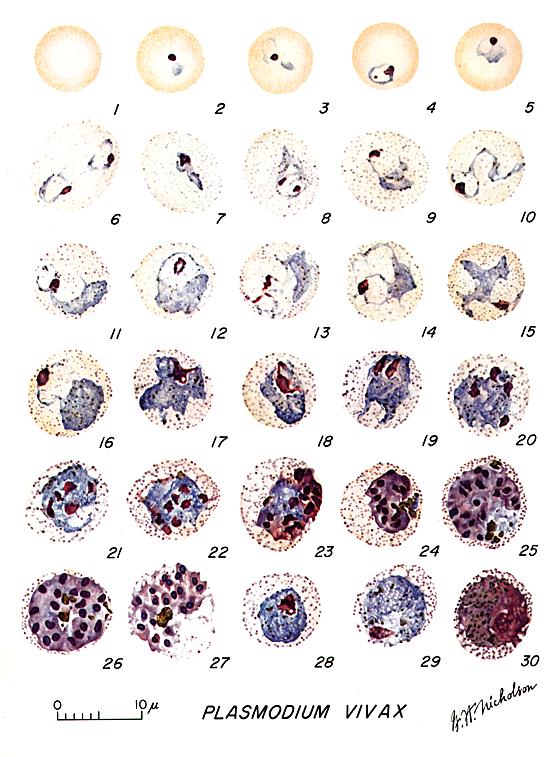QUESTION
How do you get malaria? How does malaria come to the United States? How many people have died from malaria?
ANSWER
Malaria is caused by infection with single-celled parasites called Plasmodium. There are five different species which infect humans; of these, Plasmodium falciparum is the most deadly. The Plasmodium parasites are transmitted to humans through the bite of an infected female Anopheles mosquito; when these mosquitoes bite a human, they transfer some of the parasites in their saliva.
After undergoing one set of multiplications in the liver, the malaria parasites are released into the blood, where they repeatedly infect and destroy red blood cells, multiplying in the process. These cycles of infection and destruction of red blood cells cause the cyclical fever that is characteristic of malaria. Eventually, the parasite produces new types of cells, called gametocytes; if the patient is then bitten by another mosquito, the mosquito can take up gametocytes as well as blood when it feeds, and the cycle continues.
Malaria used to be relatively common in the United States, though usually only occurring during the summer months and restricted to the warm, wet south-eastern region. However, a concerted control campaign in the 1940s, focusing mainly on vector control (i.e. killing mosquito and reducing their opportunities for breeding) swiftly led to the eradication of malaria from the US.
Nowadays, virtually all malaria cases in the US are imported from abroad, whereby people get infected when traveling to other countries, but are only diagnosed as having malaria when they return home. There are about 1,000 cases of malaria reported each year in the US, and most of these were actually caught outside the US. Very rarely, an Anopheles mosquito will bite one of these travelers once they have returned from abroad, and therefore have the potential to transmit malaria within the US. However, due to a strong public health network and good access to malaria diagnosis and treatment, these events rarely lead to more than a handful of cases before they are quickly treated and transmission eliminated again.
The World Health Organisation estimates that last year, approximately 700,000 people died of malaria. Of these, 90% were in sub-Saharan Africa, and the vast majority were children under the age of 5.

